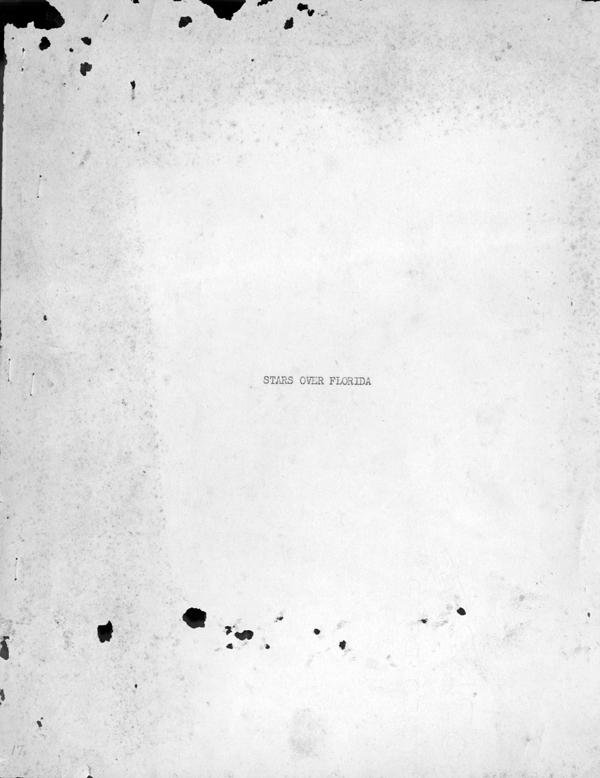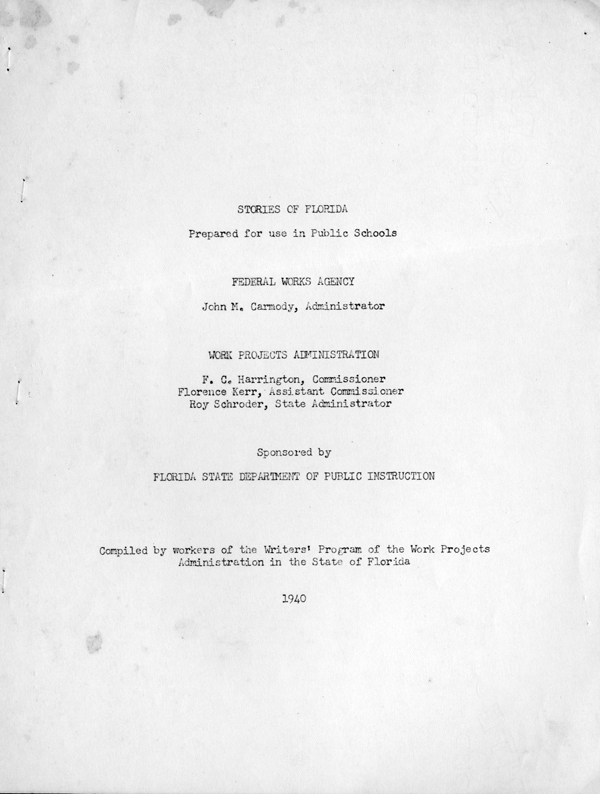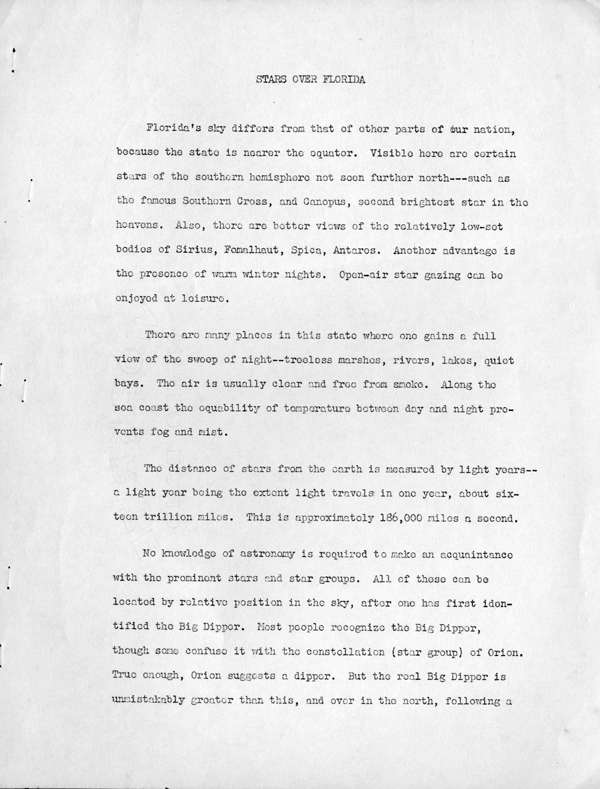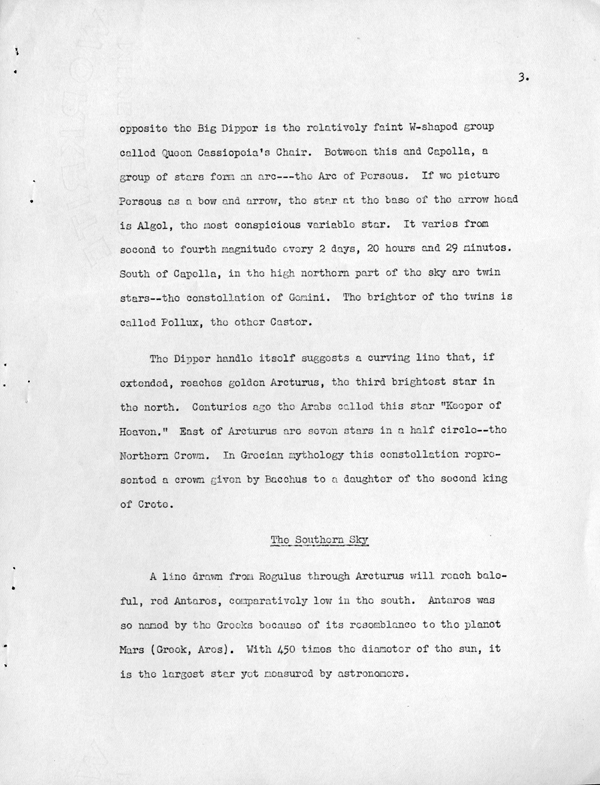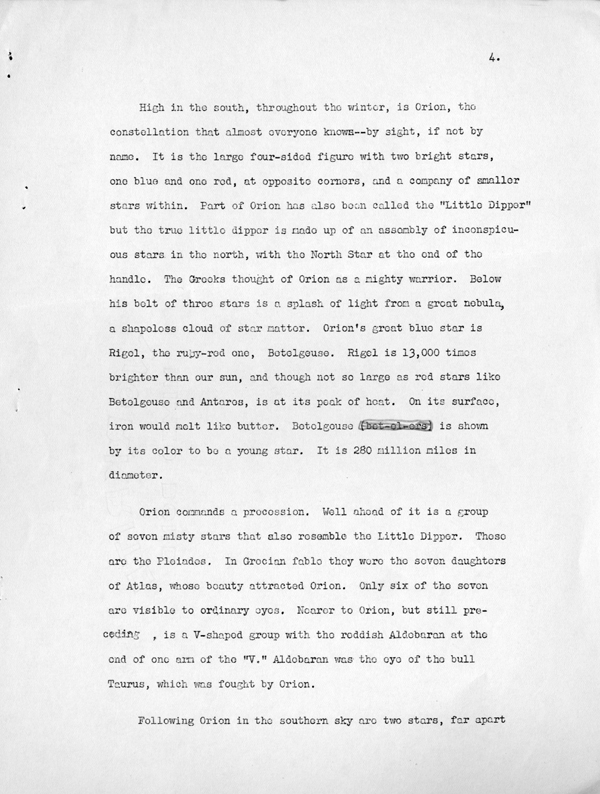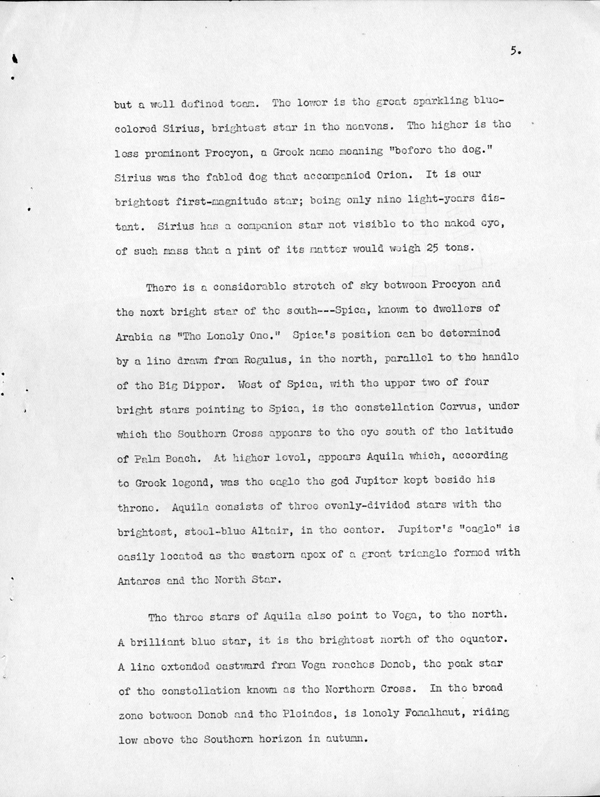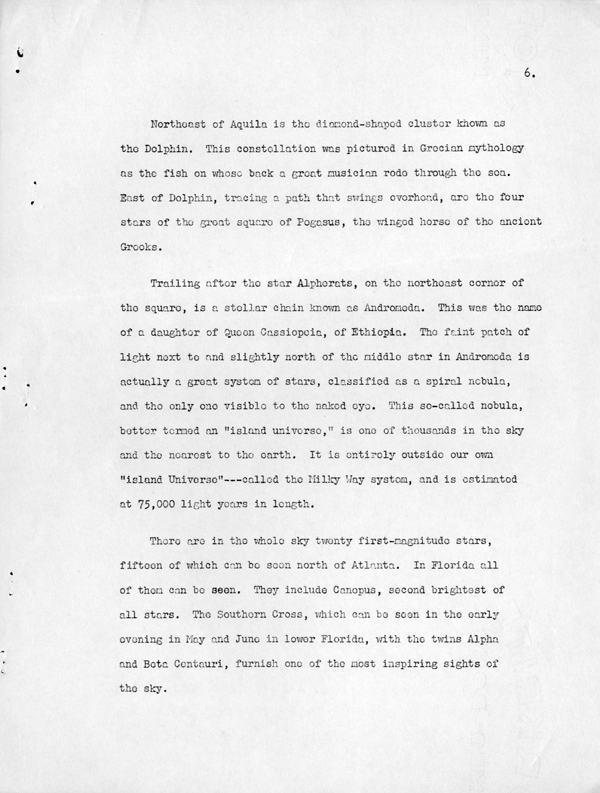Florida Memory is administered by the Florida Department of State, Division of Library and Information Services, Bureau of Archives and Records Management. The digitized records on Florida Memory come from the collections of the State Archives of Florida and the special collections of the State Library of Florida.

State Archives of Florida
- ArchivesFlorida.com
- State Archives Online Catalog
- ArchivesFlorida.com
- ArchivesFlorida.com
State Library of Florida
Related Sites
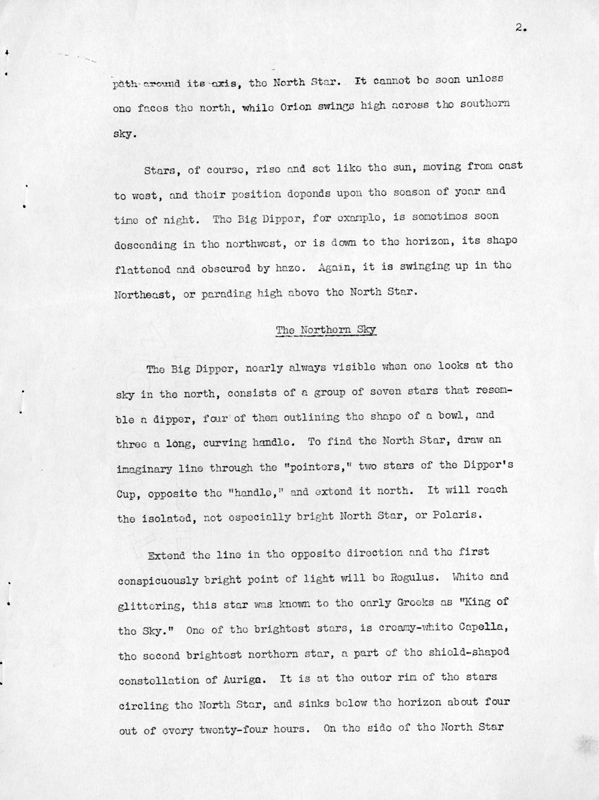
Description of previous item
Description of next item

Title
Published Date
[page 2]
path around its axis, the North Star. It cannot be seen unless one faces the
north, while Orion swings high across the southern sky.
Stars, of course, rise and set like the sun, moving from east to
west, and their position depends upon the season of year and time of
night. The Big Dipper, for example, is sometimes soon descending in the
northwest, or is down to the horizon, its shape flattened and obscured by
haze. Again, it is swinging up the Northeast, or parading high above the
North Star.
The Northern Sky
The Big Dipper, nearly always visible when one looks at the sky
in the north, consists of a group of seven stars that resemble a dipper,
four of them outlining the shape of a bowl, and three a long, curving
handle. To find the North Star, draw an imaginary line through the
"pointers," two stars of the Dipper's Cup, opposite the "handle," and
extend it north. It will reach the isolated, not especially bright North
Star, or Polaris.
Extend the line in the opposite direction and the first
conspicuously bright point of light will be Regulus. White and glittering,
this star was known to the early Greeks as "King of the Sky." One of the
brightest stars, is creamy-white Capella, the second brightest northern
star, a part of the shield-shaped constellation of Auriga. It is at the outer
rim of the stars circling the North Star, and sinks below the horizon about
four out of every twenty-four hours. On the side of the North Star
Title
Subject
Description
Source
Date
Contributor
Format
Language
Type
Identifier
Published Date
Image URL
Thumbnail
Transcript Path
Image Path
Image Path - Large
Chicago Manual of Style
Stars Over Florida. 1940. State Archives of Florida, Florida Memory. <https://www.floridamemory.com/items/show/181542>, accessed 15 December 2025.
MLA
Stars Over Florida. 1940. State Archives of Florida, Florida Memory. Accessed 15 Dec. 2025.<https://www.floridamemory.com/items/show/181542>
AP Style Photo Citation

 Listen: The Folk Program
Listen: The Folk Program